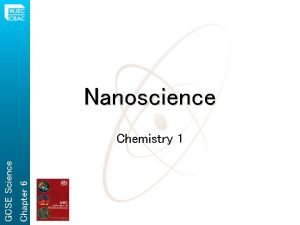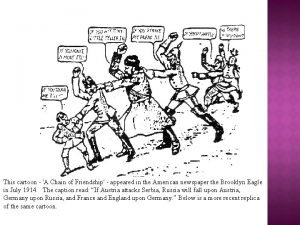Single Chain Nanoparticle Synthesis Drew Verrier Kyle Rodriguiez

- Slides: 1

Single Chain Nanoparticle Synthesis Drew Verrier, Kyle Rodriguiez*, Samuel Pazicni* drv 2000@wildcats. unh. edu; Parsons Hall, 23 Academic Way, Durham NH 03824 Introduction Results and Discussion Single chain polymers and nanoparticles are of interest in the scientific community due to their wide range of uses, including drug delivery and mimicking biological systems. 1 The azlactone functional group in particular is important due to its ability to undergo ring-opening addition under mild conditions. 3 Intramolecular cross-linking is used to transform the co-polymer into a nanoparticle (figure 1)2. In this study, a copolymer of 2 -vinyl-4, 4 -dimethyl azlactone (VDMA), and methyl methacrylate (MMA) (5) was synthesized and characterized. Synthesis of the monomer VDMA (4) proved to be difficult, and ultimately failed twice. Obtaining the correct conditions under which the cyclization reaction would work was challenging, and the monomer polymerized with itself before it could be characterized or used. Due to time constraints, the synthesis was moved forward using pre-made VDMA from a graduate student (figure 1). Since the time frame of the project was so short, there was not sufficient time to perform the polymer collapse into the nanoparticle. The 1 HNMR for VDMA is shown below (figure 1). The formation of poly(VDMA-co-MMA) is seen in the 1 HNMR characterization below (figure 2). A Figure 1. Intramolecular cross-linking to form a nanoparticle C Experimental Design B VDMA (4) was synthesized using reversible addition-fragmentation chain transfer (RAFT) polymerization by adapting a procedure from Levere et al. 1. First, N-acryloyl-2 -methylalanine (3) was synthesized as an intermediate by nucleophilic acyl substitution using 2 -methylalanine (1), 2, 6 -di-tert-butyl-p-cresol (BHT, a radical stabilizer), and acryloyl chloride (2). The product (4) was obtained from this intermediate through an acyl cyclization process with ethyl chloroformate (Scheme 1). 1 2 3 A Figure 1. 1 HNMR of 2 -vinyl-4, 4 -dimethyl azlactone 4 Scheme 1. Proposed synthetic route of VDMA The copolymer (6) was produced by heating VDMA (4), MMA (5), CTA, and AIBN under an argon atmosphere for 18 hours, then precipitated in hexanes (Scheme 2). B C B B A A Figure 2. 1 HNMR of poly(VDMA-co-MMA) Future Work 4 5 Scheme 2. Proposed synthetic route of VDMA-MMA copolymer 6 References 1. Martin E. Levere, Hien The Ho, Sagrario Pascual* and Laurent Fontaine*. Polym. Chem. , 2011, 2, 2878 2. Christopher K. Lyon, a Alka Prasher, a Ashley M. Hanlon, a Bryan T. Tuten, b Christian A. Tooley, a Peter G. Franka and Erik B. Berda*a, b. Polym. Chem. , 2015, 6, 181 3. Stanek, L. G. , Heilmann, S. M. and Gleason, W. B. (2003), Synthesis and monomer reactivity ratios of methyl methacrylate and 2 -vinyl-4, 4′-dimethylazlactone copolymers. J. Polym. Sci. A Polym. Chem. , 41: 3027– 3037. doi: 10. 1002/pola. 10897 This project could be taken further by performing the polymer collapse to cross-link it, forming the nanoparticle. Then, using 1 HNMR and Size exclusion chromatography (SEC) it could be characterized. Acknowledgements Conclusions Thanks to Samuel Pazicni, Kyle Rodriguez, William Butler, and the University of New Hampshire’s chemistry department for funding the project The monomer synthesis (scheme 1) was unsuccessful, but when pre-made VDMA was used the resulting polymerization (scheme 2) with MMA was successful as shown by the NMR (figure 2).

